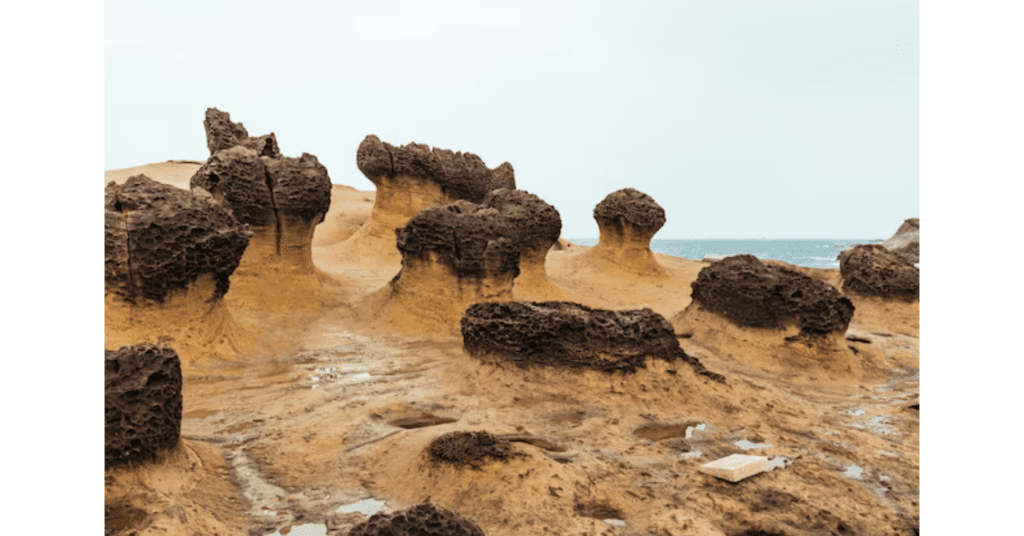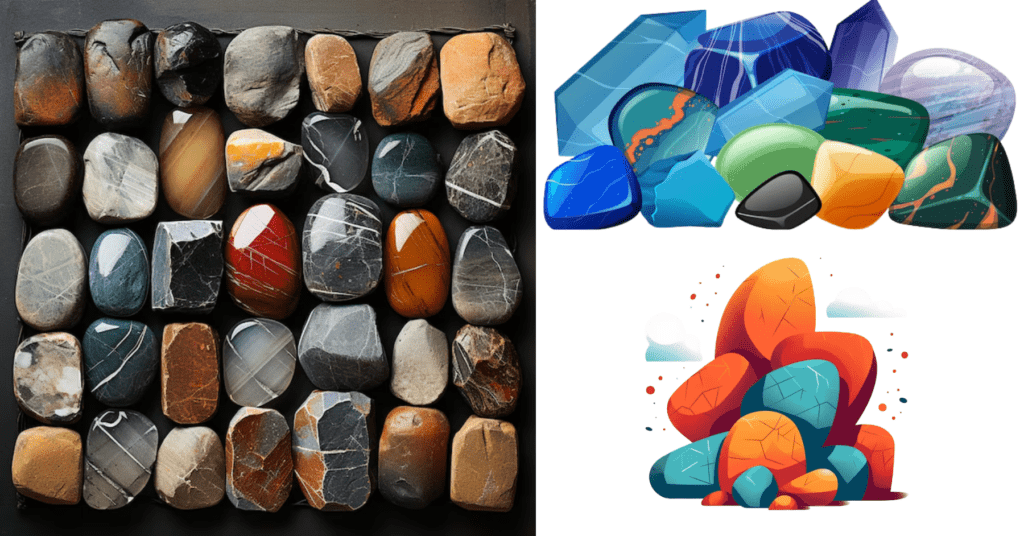In this article, we will delve into 50 different examples of metamorphic rocks, highlighting the incredible diversity within this geological class. Metamorphic rocks are captivating formations found worldwide that undergo a remarkable transformation from their original state due to the effects of heat, pressure, and chemical changes. They exhibit a wide variety of textures and colors, making them an interesting subject in geology.
What Are Metamorphic Rocks?
Before diving into our list of examples, let’s briefly understand what metamorphic rocks are. Metamorphic rocks are formed from pre-existing rocks, known as parent rocks or protoliths, through a process called metamorphism. This process typically involves high temperatures and pressures, which cause the minerals within the rocks to recrystallize and rearrange, resulting in new textures and structures.

What are some examples of metamorphic rocks?
Now, let’s explore 50 remarkable examples of metamorphic rocks from around the world:
- Marble: A stunning rock formed from limestone or dolostone that often displays beautiful veining and is widely used in architecture and sculpture.
- Slate: Known for its fine-grained texture and ability to split into thin, flat sheets, slate is commonly used for roofing and flooring.
- Schist: Schist rocks exhibit a foliated texture and can contain minerals like mica, giving them a shimmering appearance.
- Gneiss: Gneiss is characterized by alternating layers of different minerals, creating a banded appearance.
- Quartzite: This hard and durable rock forms from sandstone and is prized for its attractive appearance.
- Phyllite: Phyllite is known for its glossy sheen and develops from shale through metamorphism.
- Soapstone: A soft and talc-rich rock often used for carving and countertops due to its heat-resistant properties.
- Hornfels: These rocks are typically fine-grained and result from high-temperature metamorphism.
- Amphibolite: Featuring minerals like hornblende and plagioclase, amphibolite is notable for its greenish-black appearance.
- Serpentine: This greenish rock is named after its resemblance to snake scales and is used in jewelry.
- Anthracite Coal: A type of coal that has undergone extensive metamorphism and has a high carbon content.
- Blueschist: These bluish-green rocks form under high-pressure, low-temperature conditions.
- Eclogite: Characterized by its striking red and green minerals, eclogite is formed under extreme pressure.
- Migmatite: Migmatites display both igneous and metamorphic characteristics, often containing partially melted rock.
- Greenschist: Green in color due to the presence of chlorite and other minerals.
- Mariposite: A green and white metamorphic rock often used in decorative purposes.
- Garnet-Schist: These schists contain garnet crystals, which can be quite striking.
- Jadeite: A valuable and ornamental rock, jadeite is often used in jewelry and carvings.
- Blair Athol Slate: A distinct blue-gray slate used for roofing and decorative purposes.
- Lepidolite Schist: Contains the mineral lepidolite and is known for its shimmering appearance.
- Muscovite Schist: Rich in muscovite mica, this schist often glistens in the light.
- Staurolite Schist: Staurolite crystals in this rock create distinctive cross-shaped formations.
- Serpentinite: Known for its slippery feel, serpentinite is often found near fault zones.
- Garnet-Mica Schist: As the name suggests, this schist is rich in garnet and mica minerals.
- Sillimanite Schist: Contains the mineral sillimanite and often exhibits a foliated texture.
- Graphite Schist: Known for its graphite content and use in pencils.
- Chlorite Schist: Green in color due to the abundance of chlorite minerals.
- Hornblende Schist: Rich in hornblende, this schist can be dark green to black.
- Garnetite: Composed primarily of garnet crystals and used as an abrasive.
- Talc Schist: Known for its high talc content and soft texture.
- Kyanite Schist: Features kyanite crystals and is often blue or bluish-green.
- Anthophyllite Schist: Contains anthophyllite minerals and often appears greenish-black.
- Serpentinite Breccia: A breccia rock formed from serpentinite fragments.
- Chloritoid Schist: Contains chloritoid minerals and often exhibits a greenish color.
- Jade-Albite Schist: Combines jadeite and albite minerals in its composition.
- Magnetite Quartzite: Quartzite rich in magnetite, known for its magnetic properties.
- Tremolite Schist: Rich in tremolite minerals, often displaying a greenish color.
- Aluminous Schist: Features aluminum-rich minerals like kyanite and andalusite.
- Corundum Schist: Contains corundum minerals, which can be used for making abrasive tools.
- Staurolite-Sillimanite Schist: Combines staurolite and sillimanite minerals.
- Glaucophane Schist: Named after its blue mineral, glaucophane.
- Tourmaline Schist: Contains tourmaline crystals, often displaying various colors.
- Mica Quartzite: Quartzite with a significant mica content.
- Rutile Schist: Rich in rutile minerals, which are used in various industrial applications.
- Gedrite Schist: Contains gedrite minerals and often appears dark green to black.
- Actinolite Schist: Characterized by the presence of actinolite minerals.
- Sillimanite-Andalusite Schist: Combines sillimanite and andalusite minerals.
- Chlorite Talc Schist: Features both chlorite and talc minerals.
- Mylonite: A fine-grained, intensely deformed rock resulting from dynamic metamorphism.
- Zeolite Schist: Contains zeolite minerals and often forms in volcanic environments.

These 50 examples of metamorphic rocks showcase the incredible diversity and beauty of these geological wonders. From the glossy sheen of phyllite to the shimmering garnets in garnet-schist, each rock tells a unique story of Earth's geological history. Whether you're a geology enthusiast or simply appreciate the beauty of natural formations, metamorphic rocks never fail to impress.

